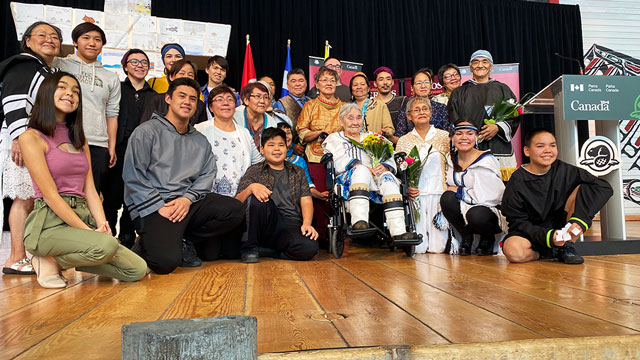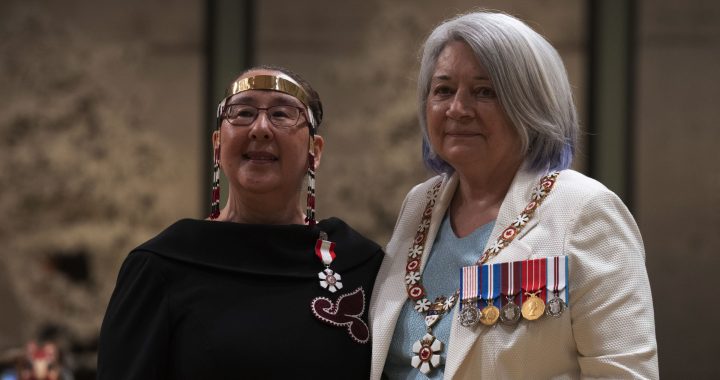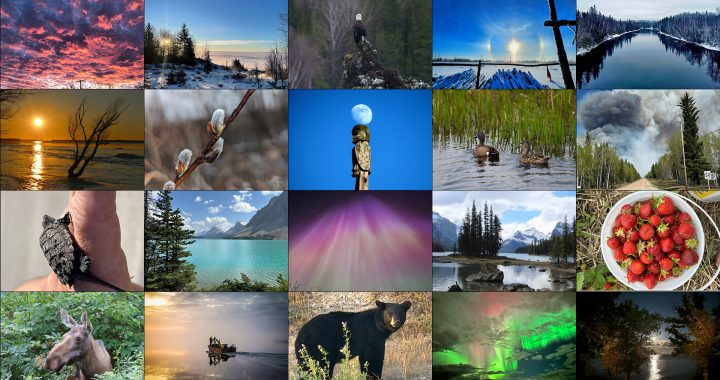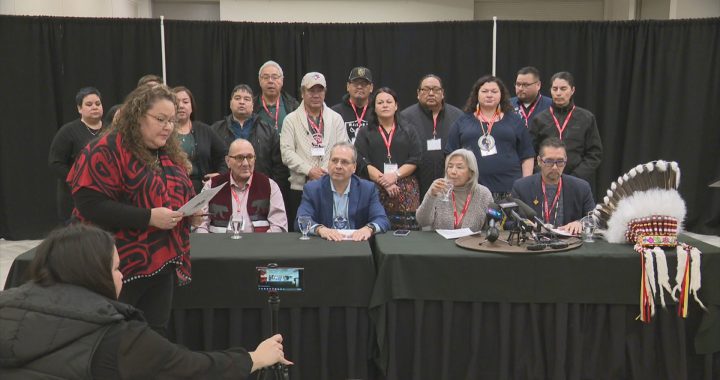Inuit efforts in the Second World War were honoured Monday at the Canadian Museum of History, 75 years after the liberation of the last Nazi extermination camps.
Qapik Attagutsiak, a 99-year-old Elder from Arctic Bay, Nunavut – surrounded by totem poles, in a building designed by renowned Indigenous architect Douglas Cardinal – took centre stage.
Attagutsiak is the last known surviving Inuk “bone collector.”
As part of the war effort on the home front, Inuk communities were encouraged to salvage animal fat as well as walrus, seal, and dog bones.
These were shipped to processing plants in the south where they were transformed into glycerin, munitions, aircraft glue, and fertilizer.

Instead of focusing on the details of her own remarkable life, Qapik decided to tell a story about collaboration and community resilience during that period.
“At that time, Inuit did not live all by themselves,” said Qapik in Inuktitut, her daughter Kataisee translating. “They had a hut, and in that hut, there would be two sets, or two or three sets of families. They were all wearing traditional clothes, and this elderly person that was also part of the family – she was also about 70 years old, and they used to trap lots of foxes – and that Elder says, ‘I want you to come with me to go check on the traps.’”
They went. A blizzard kicked in that stranded Qapik, then in her twenties, and her Elder out on the trapline.
She was “terrified” then, just as she was when she first heard about the war.
Qapik made a quick “life-saving decision.” She left the Elder and – using traditional land-based knowledge handed down from hunters and family – navigated her way back to camp.
She told her family about the stranded Elder. Clad in caribou skin, with babies on their backs, they went back out into the blizzard to look for her. Frostbite was so bad the Elder couldn’t walk, so they carried her back through the storm.
“But the thing was, they found her. She was still alive and she was so grateful,” Qapik said. “Because of the knowledge they were given, they were able to make it back to the camp alive, and the elder alive.”
For Qapik, this was a lesson for the present about community collaboration, overcoming fear, and resilience.
“This is a time that we really do have to accept that we cannot give in. We cannot give up. We always have to think in our mind, that if this situation is very hard we can trudge ahead and help each other,” she concluded.
“So my message is, do not give up.”

An untold history
Qapik was born on Jun. 11, 1920 in Nunavut, and, living the nomadic life of the era, learned to be self-sufficient early on. She studied midwifery at ten and became a midwife herself at 18.
She learned to sow and create igloo windows out of walrus intestines, and began helping older community members collect bones for the war at age 20.
Her husband was a founding member of the Canadian Rangers. They had 14 children, and Qapik adopted two more after her husband died.
She chose to downplay these details, and instead focused on the importance of this historical chapter for Nunavut Inuit in general.
“We were never very recognized as Canadians before, so this really made us part of Canada,” said Kataisee in an interview with APTN News.
“When they started hearing about the war it was not just the community that was involved with picking the bones, it was all the communities that were surrounding the area that they were living in. So it’s very important that this is the story of Inuit, and the story came from my mom, because she witnessed it herself. It’s very important for the history of Inuit and the history of Canada too.”
Qapik described how hundreds of dogs died from an unknown disease – possibly rabies, distemper, or canine hepatitis – when the bone collecting began. A hunter could have his qimmiit, or sled dogs, reduced from 12-14 to just one or two.
She recalled picking up dog carcasses, still decaying and covered with maggots, with her bare hands.
“Each adult member of a camp could typically pick up about three 125-pound bags a day. It would take as long as a week to clear an area of all the bones, and knowing that there were multiple camps in the community and the several communities that participated in this, we estimate tons and tons of bones were picked up by Inuit to help with the war effort,” said Parks Canada’s Ray Coutu.
Though Inuit contributions to Canadian history were honoured at this ceremony, this was not case in the decades following the war.
During the Cold War in the ‘50s, the federal government ordered Inuit to move from northern Quebec to the high arctic in order to shore up Canadian sovereignty in what is now referred to as the “High Arctic relocations.”
At the same time, the RCMP also shot thousands of sled dogs when they were not tied up or suffering from these unknown diseases.
The federal government has since apologized for both of these events.
These events were further complicated by an influx of missionaries, residential schools, increased settlement, and an abrupt transition into sedentary communities.
But, just like Qapik in the blizzard, the Inuit did not give up.










